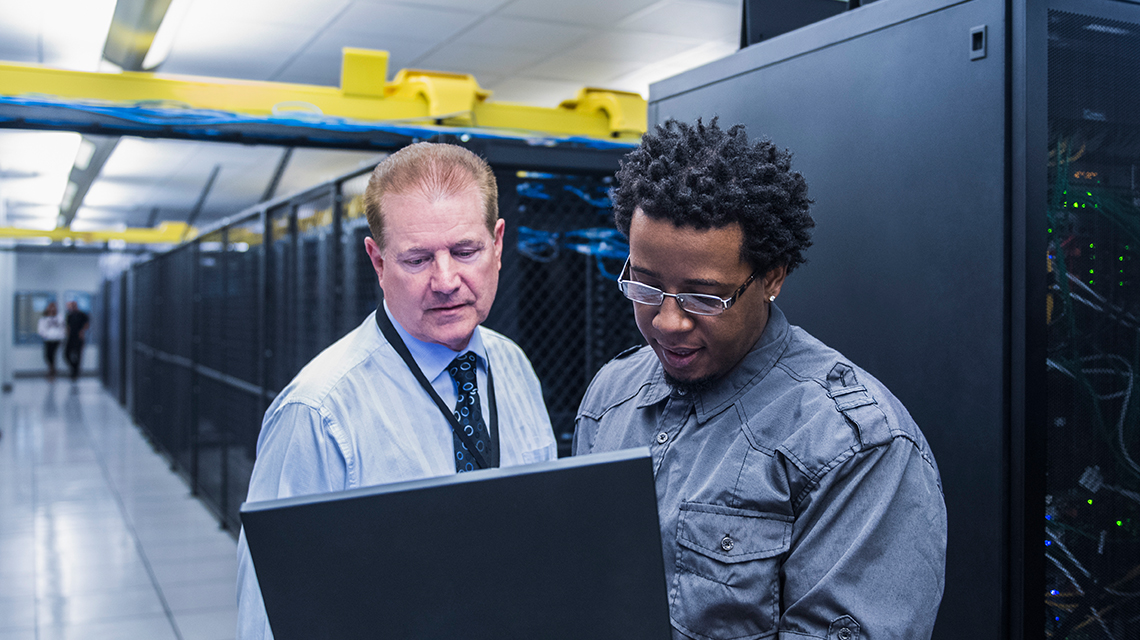Data Center Tiers: Which One’s Right for Us?
Jun 21, 2019 | 3 min read
Tags: Data Center

One year ago, we wrote about how when you listen to your customers, good things happen. We were, at the time, referring to the Fargo data center grand opening.
A similar message still resonates in the marketplace. Recently an enterprise customer of ours needed dual-path redundancy to protect its data storage while simultaneously defending it from Midwestern weather. We knew that our facility was up to the challenge – so we listened and upgraded our systems to meet their requirements.
After all, peace of mind shouldn’t be taken for granted. Knowing what data center infrastructure you need is key to giving your organization’s IT staff peace of mind – and understanding data center standards is the first step in knowing what’s right for you.
Data Center Tier Standards
When the dot-com craze hit in the 1990s, data centers began popping up around the world – driven by the increasing demand for online access and applications. It was in 1993 that the Uptime Institute began constructing an evaluation system for data center infrastructure – one that focused on performance and uptime, or how long a system can function without interruption.
Now, more than 25 years later, the Tier Standard is present in 85 countries around the world, and it continues to be the industry’s trusted global standard for data center design, build and operation. In the U.S., there are only 93 data centers certified by the Uptime Institute, with 23 facilities in the Midwest.1 And although not all data centers are certified, many data centers use these published standards to properly secure equipment.
Understanding Each Tier
The Tier Standard breaks down uptime into four main levels – each one building off the next. Recognizing which level your business needs is something to consider when choosing a colocation services partner, so here’s a breakdown:
Tier I
-
- Dedicated space with uninterruptible power supply
- 24/7 cooling equipment
- Engine generator
A Tier I infrastructure provides a dedicated space for IT systems with an uninterruptible power supply (UPS), dedicated cooling equipment that runs 24/7 and an engine generator that protects from extended power outages.
Tier II
-
- Additional power and cooling components
- Increased safety against process disruptions
Tier II facilities increase redundancy with additional critical power and cooling components (such as UPS modules and engine generators), providing increased safety against process disruptions that would result in equipment failures.
Tier III
-
- Dual paths for power and cooling
- Each component can shut down, without affecting equipment
Tier III data centers require a redundant delivery path for power and cooling (in addition to Tier II requirements) so every component supporting the environment can be shut down and maintained, without impacting the operation.
Tier IV
The addition of Fault Tolerance in the Tier IV classification means that when individual equipment failures or distribution path interruptions occur, it stops short due to the site infrastructure topology.
An ideal data center is one with a facility design and structure based on these tiers. Are you ready to learn more – and possibly tour one of our centers? Reach out to our team to see if our data centers are ready to work for you.
Moving to the Big Leagues with Data Center
JLG Architects is in the business of thinking big for its clients – and that ambition applies to its IT strategy, as well. Learn how colocation in Midco data centers helps JLG achieve its goals.
Read Case Study
Helping your business is our business.
Whether you’re looking for one solution or many, we’re here to handle your technology, so you can focus on what you do best – operating and growing your business. Reach out and we'll help you find the products that fit your needs and your budget.
